Angels with Dirty Faces
9 /10 1 Votes
100% Rotten Tomatoes Genre Crime, Drama, Film-Noir Initial DVD release January 25, 2005 Country United States | 8/10 IMDb Film series Dead End Kids Duration Language English | |||||||||||||||||||||||||||||||||
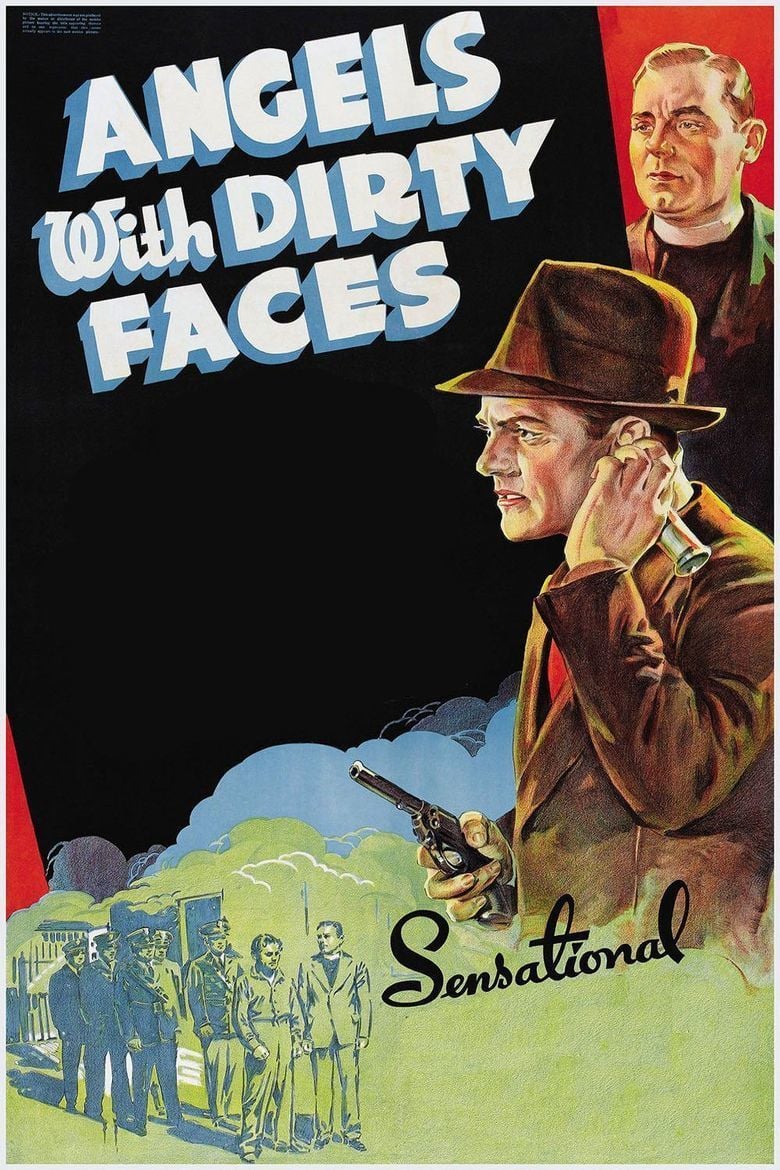 | ||||||||||||||||||||||||||||||||||
Release date November 24, 1938 (1938-11-24) Cast (Rocky Sullivan), (Jerry Connolly), (James Frazier), (Laury Ferguson), (Mac Keefer), The 'Dead End' Kids (The 'Dead End' Kids)Similar movies Tagline The saga of America's dirty faced kids... And the breaks that life won't give them! | ||||||||||||||||||||||||||||||||||
Angels with dirty faces 1938 trailer
Angels with Dirty Faces is a 1938 American crime film directed by Michael Curtiz for Warner Brothers. It stars James Cagney, Pat O'Brien, The Dead End Kids, Humphrey Bogart, Ann Sheridan, and George Bancroft. The screenplay was written by John Wexley and Warren Duff based on the story by Rowland Brown. The film chronicles the fictional rise and fall of the notorious gangster William "Rocky" Sullivan. After spending three years in prison for armed robbery, Rocky intends to collect $100,000 from his co-conspirator, mob lawyer Jim Frazier. All the while, Father Jerry Connolly tries to prevent a group of youths from falling under Rocky's influence.
Contents
- Angels with dirty faces 1938 trailer
- Filme completo anjos de cara suja angels with dirty faces legendado
- Plot
- Cast
- Development
- Casting
- Writing
- Filming
- Release
- Adaptations in other media
- Initial reactions
- Accolades
- Contemporary consensus
- Legacy
- References
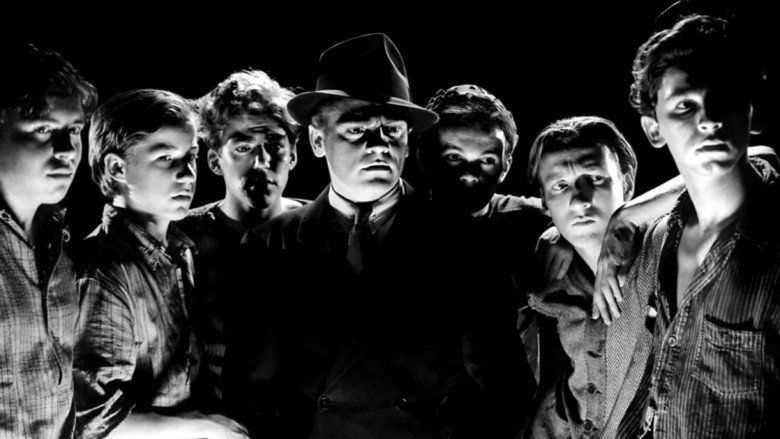
Brown wrote the scenario in August, 1937. After pitching the film to a number of studios, he made a deal with Grand National Pictures, who wanted Cagney to star in the lead role. However, the film never came to fruition, owing to Grand National's bankruptcy in 1939. Cagney then returned to Warner the same year, taking Brown's script with him. Warner aqcuired the story and asked a number of directors to take on the project; eventually settling with Curtiz. Principal photography began in June, 1938 at Warner's Burbank studios, and finished a week behind schedule in August, due mostly to the time it took to shoot Rocky's stand off with the police and eventual execution.
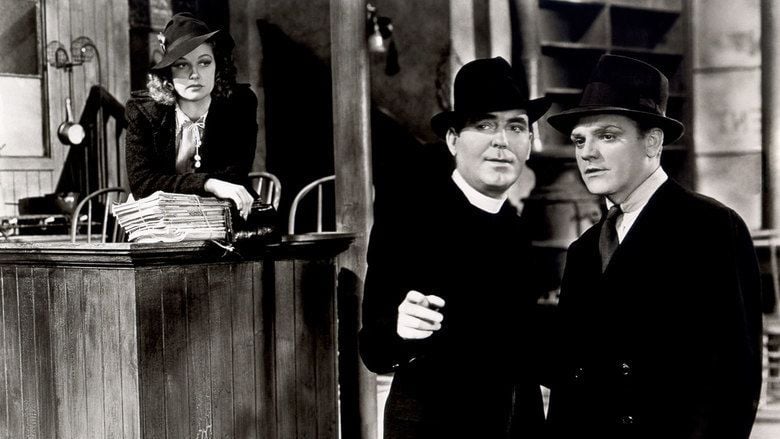
Angels with Dirty Faces was released on November 28, 1938, to positive reviews. At the 11th Academy Awards, the film was nominated in three categories: Best Actor (Cagney), Best Director (Curtiz), and Best Story (Brown). Angels with Dirty Faces is considered to be one of the best movies of all time, and is widely regarded as a defining moment in Cagney's career. It was shortlisted by the American Film Institute in 2008, and was voted 67th in a list of the "100 Best Film Noirs of All Time" by Slant Magazine in 2015.
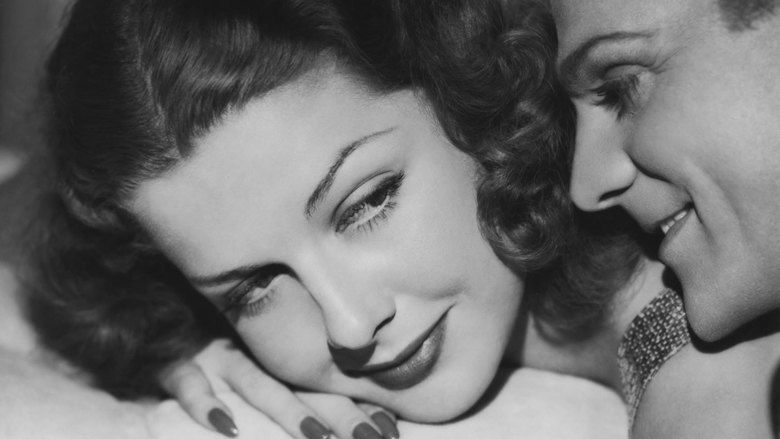
Filme completo anjos de cara suja angels with dirty faces legendado
Plot

In 1923, Rocky Sullivan (Frankie Burke) and Jerry Connolly (William Tracy) attempted to rob a railroad car carrying fountain pens. Jerry, the faster runner, escaped from police, while Rocky was caught and sentenced to reform school.
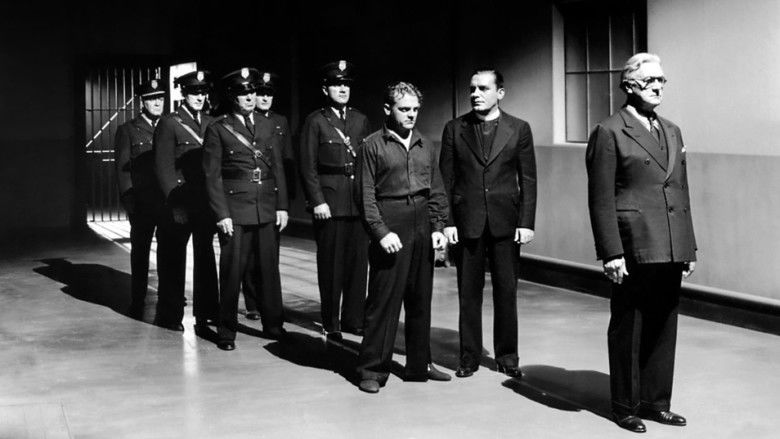
Thirteen years later, Rocky (James Cagney) is arrested for armed robbery. His lawyer and co-conspirator, Jim Frazier (Humphrey Bogart), asks him to take the blame and, in exchange, he will give Rocky the stolen $100,000 on the day he is released. Rocky agrees, and is sentenced to three years in prison. After serving his sentence, he returns to his old neighborhood and visits Jerry (Pat O'Brien), who is now a Catholic priest. Jerry advises Rocky to get a place "in the old parish"; he does so, renting a room in a boarding house run by Laury Martin (Ann Sheridan), a girl he bullied in school. He then pays a visit to Frazier's casino. Frazier claims to have been unaware of Rocky's release, but promises to have the $100,000 ready by the end of the week, and gives Rocky $500 spending money.
Rocky is pickpocketed after leaving the casino. The culprits turn out to be a group of youths: Soapy (Billy Halop), Swing (Bobby Jordan), Bim (Leo Gorcey), Pasty (Gabriel Dell), Crab (Huntz Hall), and Hunky (Bernard Punsly). They admire Rocky's reputation and criminal lifestyle so, after retrieving his wallet, Rocky invites them to dinner. While they are eating, Jerry shows up and asks the gang why they have not been playing basketball. With Rocky's help, he convinces them to play against another team. At the match, Jerry and Laury express equal concern over the negative influence Rocky may be having on the gang.
While walking home, Frazier's hit squad makes an attempt on Rocky's life. He survives, and retaliates by kidnapping Frazier, raiding his house at gunpoint, and stealing $2,000 and a ledger. Frazier's business partner, Mac Keefer (George Bancroft), gives Rocky his $100,000 in full, but informs the police of the kidnapping. Rocky is arrested, but after discovering he has possession of the ledger, Frazier tells the police it was all a "misunderstanding" and Rocky is released. Jerry learns of the kidnapping, and decides to go to the press to expose corruption in New York. Rocky tries unsuccessfully to reason with him. On the radio, Jerry denounces the corruption, as well as Rocky, Frazier and Keefer. Frazier and Keefer assure Rocky that no harm will come to Jerry, but he overhears their plans to kill them both. Rocky kills Frazier and Keefer instead and, after escaping the casino, makes his way to an abandoned warehouse. There, he kills a police officer, and a standoff ensues with the rest of the force. Jerry arrives and tries to reason with Rocky, telling him the entire building is surrounded, but Rocky takes him hostage. While trying to escape, Rocky is shot in the leg and caught. After standing trial, he is sentenced to death.
On the night of his execution, Jerry pleads with Rocky to show people that he died a coward by begging for mercy on his way to the death house, citing the negative influence he has had on Soapy and the gang as his reason. Rocky refuses, but on his way to the electric chair, he does start begging and screaming for mercy, though his motive is unclear to the viewer. The final scene shows Soapy and the gang reading of how Rocky "turned yellow" in the face of his execution, and they lose all respect for him.
Cast
Development
Rowland Brown wrote the scenario for Angels with Dirty Faces in August, 1937. He was known in Hollywood for writing and directing a number of crime movies in the early 1930s, including The Doorway to Hell and Quick Millions. He presented the story to Mervyn LeRoy, who was keen to direct a "vehicle" starring the Dead End Kids, a group of young actors from New York. Brown and LeRoy tried unsuccessfully to negotiate a fee for the scenario.
Brown then began pitching the film to other studios, and eventually made a deal with Grand National Pictures, who wanted James Cagney to star in the lead role. By the end of 1935, it became apparent to Cagney and his business manager brother, William, that Warner Brothers were only interested in paying him a "very small percentage of the income dollar derived" from his work. Therefore, Cagney had no choice and walked away until a better arrangement with Warner could be made. After filing a lawsuit to "rectify the inequalities," Cagney started working for Grand National Pictures, a small studio compared to Warner. At the time he was offered the role of Rocky Sullivan, Cagney had already made one film for Grand National, Great Guy, but fearing he would be typecast in "tough guy" roles, as he had been at Warner, Cagney turned down the role and opted to star in Something to Sing About. The film's budget grew to an astronomical $900 thousand, and, on its release, did not fare well at the box office. Its underperformance is believed to have been a contributing factor in the 1939 bankruptcy of Grand National.
Following Something to Sing About, Cagney returned to Warner after reaching a better deal with them. At his brother's insistence, he took Brown's story with him and presented it to the studio. Warner acquired the story and then asked a number of directors to take on the project. LeRoy was the first, and although he showed interest, he was unable to commit because he was making movies for MGM; Warner then asked Brown, who showed no interest at all; and finally, Michael Curtiz, who accepted their offer.
Casting
Although Cagney had been convinced that he would never agree to play the role of a coward being dragged to his execution, he became enthusiastic about portraying Rocky, seeing it as an opportunity to prove that his acting range extended beyond tough guy roles. To play Rocky, Cagney drew on his memories of growing up in the Yorkville section of Manhattan, New York. His main inspiration was a drug-addicted pimp, who stood on a street corner all day hitching his trousers, twitching his neck, and repeating: "Whadda ya hear! Whadda ya say!" Those mannerisms came back to haunt Cagney, who later wrote in his autobiography: "I did those gestures maybe six times in the picture. That was over thirty years ago - and the impressionists have been doing me doing him ever since." Cagney's other inspiration was his childhood friend, Peter "Bootah" Hessling, who was convicted of murder and executed by electric chair on July 21, 1927. The night Bootah was executed, Cagney was playing in a Broadway performance, and wept on hearing of his death.
Pat O'Brien was cast as Father Jerry Connolly, Rocky's childhood friend. O'Brien had been a contract player with Warner Bros. since 1933, and eventually left the studio in 1940 following a dispute over the terms of his renewal contract. He and Cagney first met in 1926 in Asbury Park, New Jersey. O'Brien was a "lonely, young" actor "playing in a stock company". He heard the stage play Women Go on Forever (by Mary Boland) was coming to Asbury Park and on its way to Broadway. Wanting to meet the star of the show, he went backstage after a performance and met Cagney for the first time. O'Brien and Cagney became great friends, and remained so until the former's death in 1983. Cagney died only three years later.
By May 1938, the Dead End Kids had already starred in Samuel Goldwyn's Dead End; as well as Warner's Crime School (both with Humphrey Bogart). They had signed a two-year contract with Goldwyn in 1937, but he sold the contract to Warner Bros. the same year because of their behavior on the set of Dead End; in one instance, they "jumped" Bogart and "stole his pants" while in another they crashed a truck into a sound stage. Bogart portrays the crooked lawyer Jim Frazier in Angels With Dirty Faces. German scholar Winfried Fluck described Bogart's character, Jim Frazier, as an "entirely negative" and "thoroughly bad figure," in "contrast" with Cagney's antihero.
Writing
Brown's story was revised a number of times by John Wexley and Warren Duff. They provided "powerful treatments," but as with many of the "catch-as-catch-can" pictures of the time, the screenplay was considered insubstantial. Cagney later recalled: "the actors had to patch up [the script] here and there by improvising right on the set".
Filming
Principal photography began in June, 1938 at Warner's Burbank studios, and finished a week behind schedule in August, due mostly to the time it took to shoot the scenes of Rocky's gunfight with police and his execution.
Cagney's opening scene with the Dead End Kids took place in the basement of a deserted building. By this time, the Dead End Kids "had been throwing their weight around quite a bit with [other] directors and actors". As the scene was being shot, Leo Gorcey jokingly ad-libbed "he's psychic!, thereby throwing the rhythm of the scene right out the window, souring the whole thing very nicely". So in the next take, just before he said "come here, suckers," Cagney "stiff arm[ed Gorcey] right above the nose. His head went back [and hit] the kid behind him, stunning them both momentarily." Huntz Hall saw Gorcey being hit, and later recalled in 1978: "Leo hated [Cagney] for the rest of his life" after the incident.
While filming Rocky's shootout with the police, one scene called for Cagney to be "right at the opening" as machine-gun bullets took out the windows above his head. At this point in his career, Cagney had experience with the unpredictability of using live gunfire and he later recalled that either "common sense or a hunch" made him cautious. He told Curtiz to "[shoot the scene] in process," and as he got out of the way, "Burke, the professional machine gunner, fired the shots". One of the bullets deflected hitting "the steel edge of the window," and going "right through the wall" where Cagney's head had been. This experience convinced Cagney that "flirting this way with real bullets was ridiculous".
Rocky's execution was shot at the Sing Sing Correctional Facility. The death house featured in the film was designed by state architect Lewis Pilcher; it went into service in February 1922. For years, viewers have wondered if Rocky really turns yellow as he is being strapped into the electric chair, or if he is faking it in order to keep his promise to Jerry. Cagney later said: "In looking at the film, it is virtually impossible to say which course Rocky took - which is just the way I wanted it. I played [the role] with deliberate ambiguity so that the spectators can [form their own opinions]. It seems to me it works out fine in either case."
Release
The film premiered on November 26, 1938, at the Majestic Theater in Reno, Nevada. Angels with Dirty Faces grossed $1.7 million from the worldwide box office, and is said to have been a financial success. Analysts claim that if it weren't for Angels with Dirty Faces and two other films directed by Curtiz that year (The Adventures of Robin Hood and Four Daughters), Warner Bros. would have lost a considerable amount of money, resulting in negative turnover for the company's 1938 fiscal year.
In 1997, Angels with Dirty Faces was released on VHS by Warner Bros.. In February, 2005, a digitally-remastered version of the film was released on DVD. The release was part of the "James Cagney Collection", in which a number of special bonus features were made available, including: audio commentary by film historian Dana Polan, an "Angels with Dirty Faces: Whaddya Hear? Whaddya Say?" featurette, a radio production, movie trailers, and a short film titled "Warner Night at the Movies" with film critic and historian Leonard Maltin. This was followed by a further release as part of The Criterion Collection in April, 2007, although the DVD itself was no different to its 2005 counterpart, having received the same bonus features.
Adaptations in other media
Angels with Dirty Faces has been adapted into two radio plays. The first was the May 22, 1939, broadcast of Lux Radio Theater, with Cagney and O'Brien reprising their film roles; the second on the September 19, 1941 broadcast of the Philip Morris Playhouse, starring Sylvia Sidney.
Initial reactions
Angels with Dirty Faces was met with critical acclaim upon release. Frank Nugent, of The New York Times, attended the world premiere in Nevada, and called the film a "savage melodrama" offering "Cagney at his best". The New York-based motion picture journal Harrison's Reports had similar views. In a review dated November 5, 1938, they called the film a "powerful gangster melodrama," and said it is "one of the most thrilling pictures produced in some time." The "acting, particularly by James Cagney, is brilliant". On the other hand, Variety magazine was less enthused; on December 31, 1938, they said: "On the strength of the Cagney-O'Brien combo, [Angels with Dirty Faces] should do fair business, but the picture itself is no bonfire." That "cowardice angle [at the end of the film] is thoroughly hokey, [and the] 'Dead End' kid story has already been told too many times".
Accolades
Cagney won two awards for Best Actor from the National Board of Review and the New York Film Critics Circle. Angels with Dirty Faces was nominated for three awards at the 11th Academy Awards ceremony: Best Actor (for Cagney), Best Director (for Curtiz), and Best Writing (for Brown).
Contemporary consensus
The review aggregator Rotten Tomatoes reports a 100 percent critical rating (based on 20 reviews; all certified "fresh", with an "average rating" of 8 out of 10). In 2005, Slant Magazine praised Angels with Dirty Faces for being Warner's "best gangster movie". Awarding four out of four stars, Jeremiah Kipp said: "Rocky Sullivan embodies all the qualities we love about bad guys." Cagney "offers a real intensity and a sense of playfulness," even as he shoots "fellow gangsters" dead. The final, "climactic" scene of "cowardice is unparalleled in gangster movies, and the more Cagney begs and screams, the more [we are] amazed at how he reduces the hero worship of gangsters to nothing. [The film marks] Cagney’s finest hour in a career filled with great performances."
Legacy
Angels with Dirty Faces is widely regarded as one of the best movies of all time; one of the best in Cagney's career, and a "true example of brilliant American cinema." In 2008, it was shortlisted by the American Film Institute for selection in its list of the top 100 movies of the last 100 years. In 2013, Steven Van Zandt named it as one of his "most favorite mob movies" in an article for Rolling Stone. Two years later, Slant Magazine named it 67th in a list of the "100 Best Film Noirs of All Time".
Over the years, the film has inspired a number of parodies. In 1939, Warner Bros. released a cartoon short spoofing their "cycle" of crime films; the cartoon's title, Thugs with Dirty Mugs, is a direct pun on Angels with Dirty Faces. In the early 1990s, parodies appeared in the form of films within a film in Home Alone and its sequel, Home Alone 2: Lost in New York. These parodies are called Angels with Filthy Souls and Angels with Even Filthier Souls. In an episode of Sesame Street, a segment entitled Monsters with Dirty Faces features "Officer Grover showing a gang leader named Rocky how to effectively wash his face." Furthermore, the film's plot inspired an episode of Batman: The Animated Series called It's Never Too Late.
Sham 69, an English punk rock group, had a hit single called Angels with Dirty Faces in 1978. Frontman Jimmy Pursey was inspired to write the song after watching Cagney in the film one evening with his friend, Chrissie.
References
Angels with Dirty Faces WikipediaAngels with Dirty Faces IMDbAngels with Dirty Faces Rotten TomatoesAngels with Dirty Faces themoviedb.org
